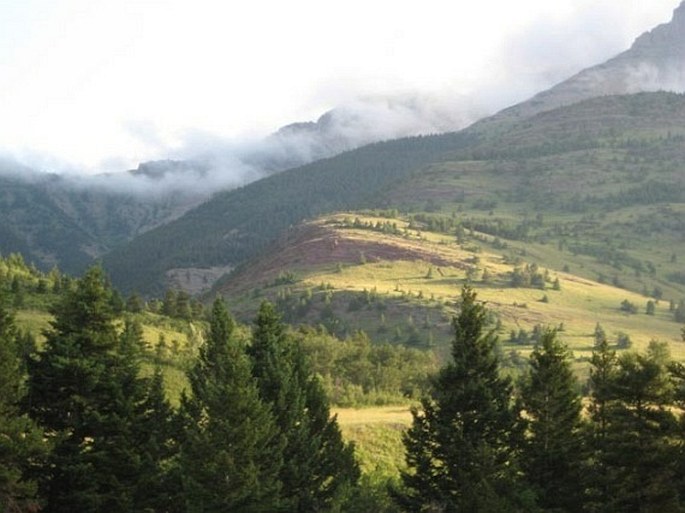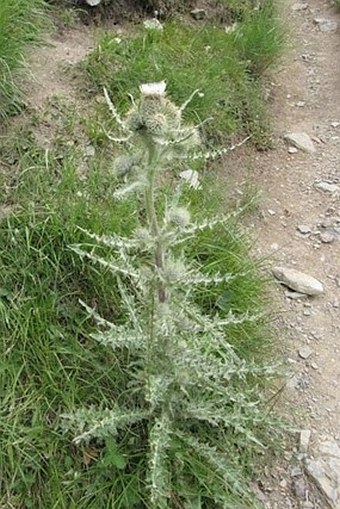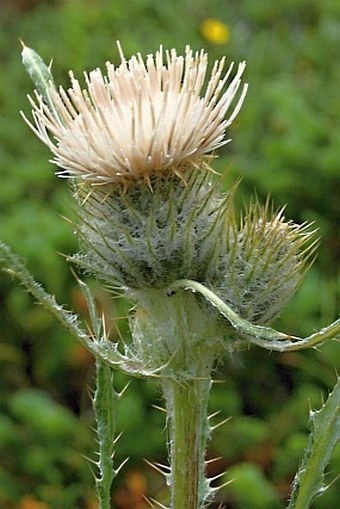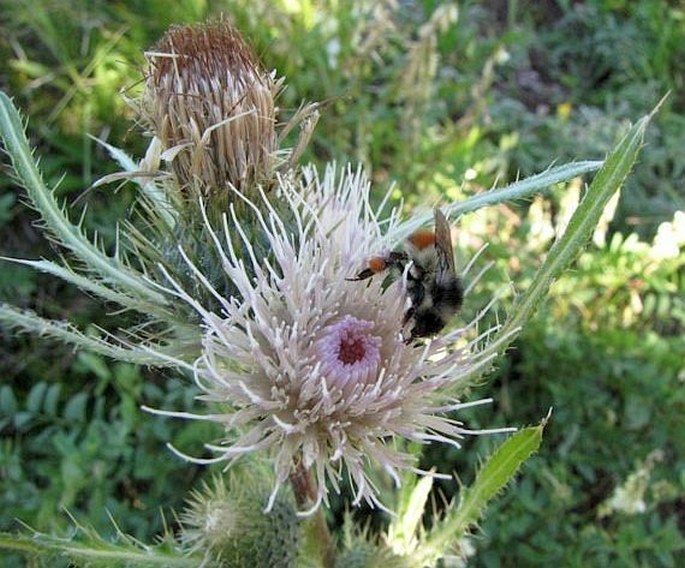Syn.: Cirsium hookerianum Nutt., Carduus hookerianus (A. Gray) A. Heller, Carduus kelseyi Rydb., Cnicus hookerianus A. Gray
Family: Asteraceae Bercht. et J. Presl

Distribution: Limited distribution through northwest of North America. Found in Alberta, British Columbia, Idaho, Montana, Washington and Wyoming.
Ecology: Moist soil, grasslands, forests margins, subalpine and alpine meadows, in elevations from 600 to 2900 m. Blooms from June to September.

Description: Biennial herb, usually monocarpic. Stem 20–150 cm tall, from taproot, erect, thick and succulent at the base, simple or short-branched,variably woolly with trichomes or finely arachnoid. Leaves alternate, linear to oblong or lanceolate, 5–25 cm long, 1–8 cm wide, margins shallowly lobed, surface with long, soft, arachnoid hairs; basal leaves up to 30 cm long and 5 cm wide. Flower heads borne in terminal spike of 3 or more heads; heads 3–4 cm high; disc florets creamy white or pinkish; ray florets absent; bracts narrow, spreading, spine-tipped, greenish or purplish, surface densely woolly with septate trichomes to tomentose or arachnoid. Fruit is a dark brown achene, 5–6.5 mm long with pappus, 18–22 mm.
Note: The species name commemorates British botanist William J. Hooker (1785–1865), director of Kew Botanical Garden, who sponsored several botanists/collectors to explore flora of North America.




These images were taken in Canada, Alberta, Waterton Lakes National Park (by Karel Bergmann, July 2013) and Canada, Alberta, Jasper NP, Medicine Lake; Banff NP, Bow Lake (by Alena Vydrová and Vít Grulich, 18. and 20. 7. 2007).


